8 Islands That Wow Beneath The Surface + 5 That Only Look Good In Photos

Ever scrolled through Instagram and fallen in love with a dreamy island paradise, only to arrive and find it completely different from what you expected?
Not all island getaways deliver on their photogenic promises. Some truly shine with hidden wonders beneath their surface, while others are merely pretty facades for social media.
Let’s explore which island destinations are genuinely magical and which might leave you feeling a bit deceived.
1. Palawan, Philippines – Nature’s Underwater Museum

Most visitors come for the limestone cliffs and lagoons featured in travel magazines, but miss the real magic hiding beneath the waves. Palawan’s underwater ecosystem boasts some of the most diverse coral reefs in the world, with over 1,300 species of marine life.
I’ve spent hours mesmerized by sea turtles gliding through crystal waters and rainbow-colored fish darting between ancient corals. The island’s remote location has protected it from mass tourism impacts, preserving both the land and underwater environments.
2. Dominica – The Caribbean’s Best-Kept Secret
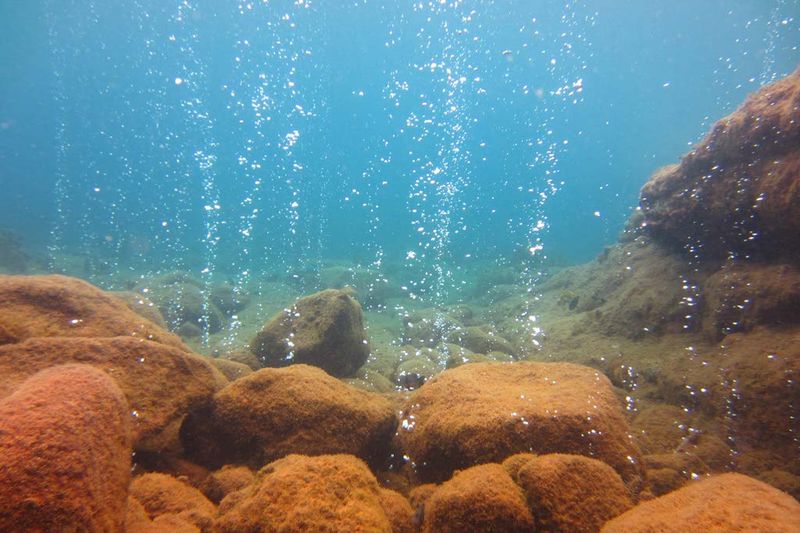
While neighboring islands focus on beach resorts, Dominica captivates with its wild interior and underwater wonders. They call it the ‘Nature Island’ for good reason – it’s home to 365 rivers, hot springs, and the world’s second-largest boiling lake.
Beyond its volcanic features, I’ve discovered that Dominica’s waters offer extraordinary encounters with sperm whales that reside here year-round. Champagne Reef, where volcanic vents release bubbles through the seabed, creates a truly magical swimming experience you won’t find in any resort brochure.
3. Cocos Island, Costa Rica – Shark Lovers’ Paradise
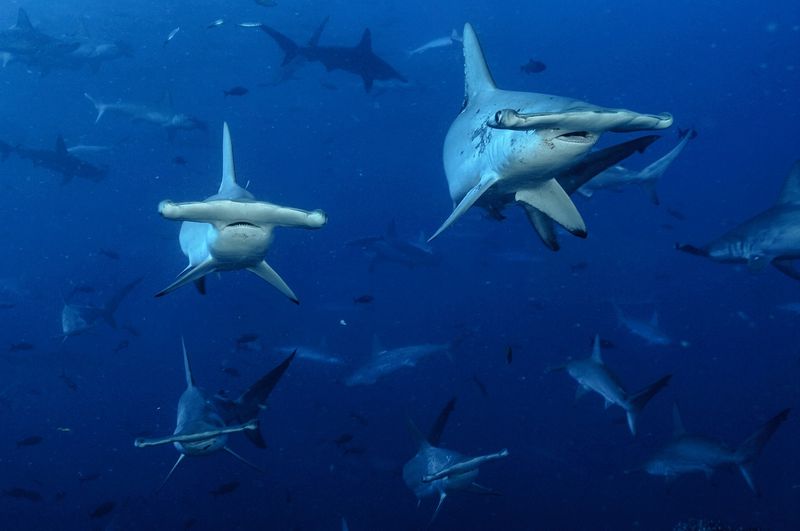
Located 340 miles offshore, Cocos Island isn’t easy to reach, but adventurous divers consider it the holy grail. What makes this remote outpost special isn’t its modest surface features but what swims beneath – massive schools of hammerhead sharks, sometimes hundreds strong.
The journey requires dedication: a 36-hour boat ride and advanced diving skills. Yet those who make the effort witness one of nature’s most spectacular gatherings. During my visit, I floated motionless as these prehistoric creatures circled overhead, a humbling experience that photos simply cannot capture.
4. Bonaire – Divers’ Utopia Without the Crowds
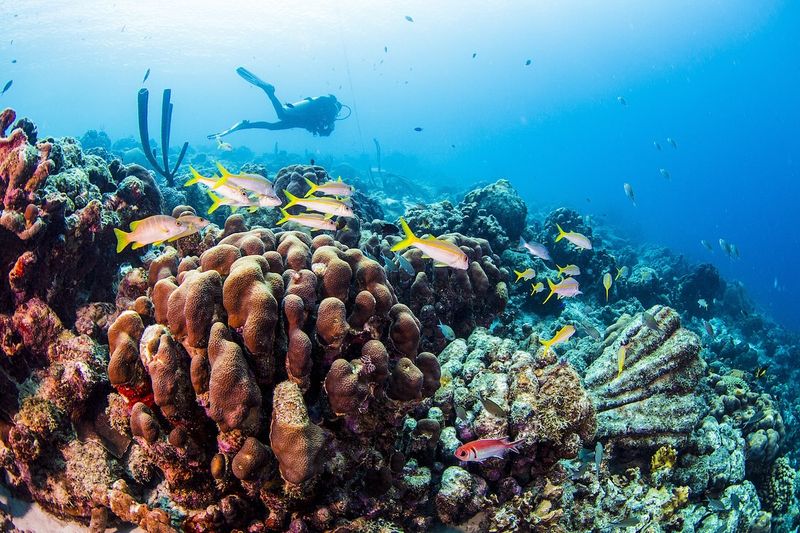
From shore, Bonaire appears modest – a flat, arid island without the dramatic peaks or white-sand beaches that dominate Caribbean marketing. Yet this unassuming island hides an underwater wonderland accessible right from shore.
Yellow stones marking dive sites line the coast, allowing independent exploration without boats. I’ve spent weeks here diving multiple times daily, encountering seahorses hiding in coral gardens and friendly tarpons patrolling shallow reefs. The island’s commitment to marine conservation since the 1970s has created one of the healthiest reef systems in the Caribbean.
5. Raja Ampat, Indonesia – Biodiversity Beyond Belief

If scientists designed the perfect marine ecosystem, it might look like Raja Ampat. This remote archipelago sits at the heart of the Coral Triangle, hosting more marine species than anywhere else on Earth. The surface views of jungle-covered karst islands are stunning, but they’re merely the appetizer.
Beneath the waves, I’ve witnessed coral reefs so dense with life that every square inch teems with activity. Manta rays soar overhead while pygmy seahorses smaller than your fingernail hide in sea fans. The currents bringing nutrient-rich water create the perfect conditions for marine life to thrive in spectacular abundance.
6. Galápagos Islands, Ecuador – Evolution’s Living Laboratory
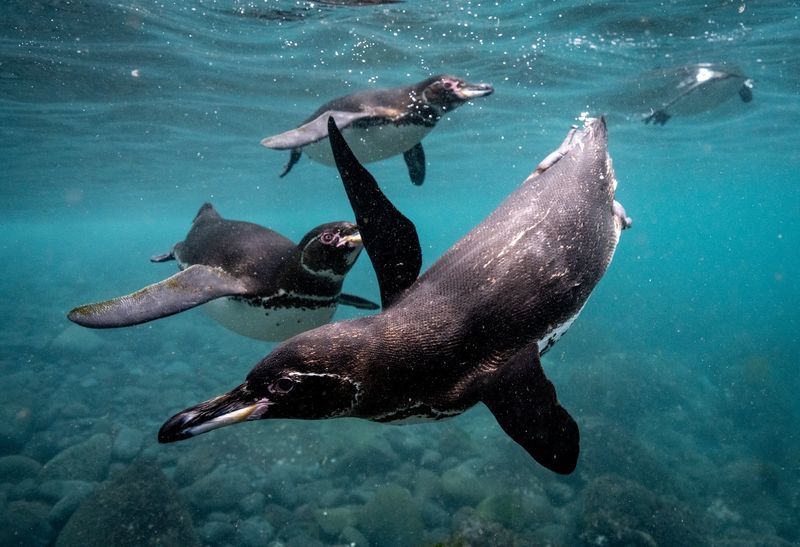
Made famous by Darwin’s theory of evolution, the Galápagos Islands offer more than just unique land creatures. The collision of cold and warm ocean currents creates an environment where tropical fish swim alongside penguins and marine iguanas – the world’s only sea-going lizards – dive for algae.
During my snorkeling adventures, playful sea lions treated me like a potential playmate, spinning circles around me. Where else can you swim with penguins in the morning and lounge with prehistoric-looking iguanas in the afternoon? The islands’ protected status means marine life here never developed a fear of humans.
7. Chuuk Lagoon, Micronesia – Haunting Underwater Museum
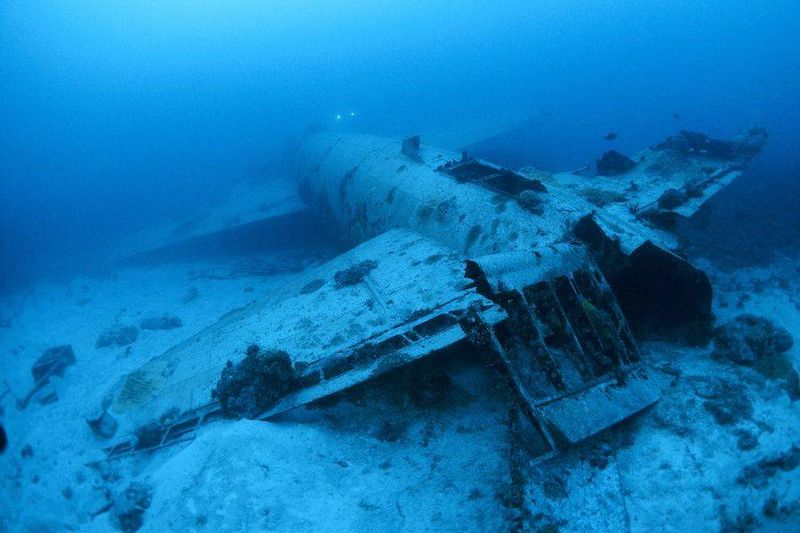
History buffs and wreck divers consider Chuuk (formerly Truk) Lagoon the ultimate underwater time capsule. During WWII, American forces sank an entire Japanese fleet here, creating what’s now the world’s largest ship graveyard.
When diving these wrecks, I’ve seen fighter planes still sitting in cargo holds, medical supplies in ships’ hospitals, and personal items from sailors. The passage of time has transformed these wartime casualties into artificial reefs teeming with marine life. Coral now grows over artillery shells, and colorful fish swim through captains’ quarters in a poignant blend of history and nature.
8. Saba – The Caribbean Mountain with Undersea Surprises
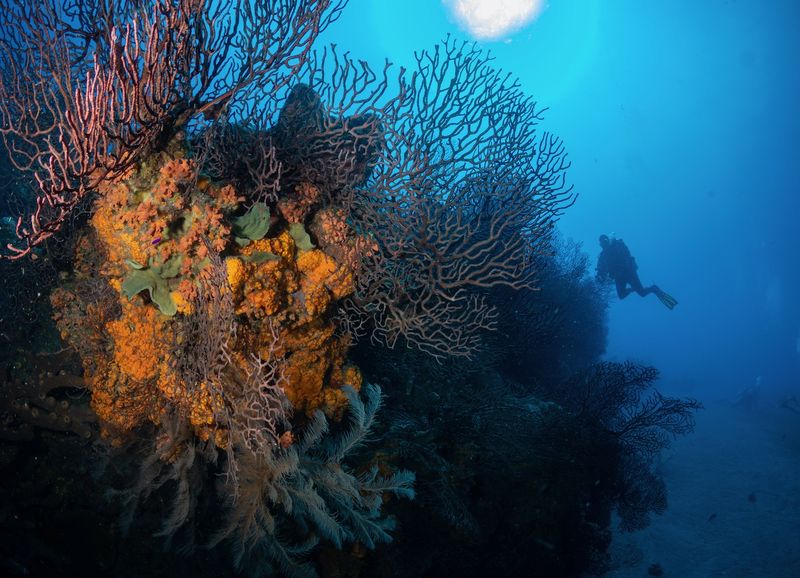
From a distance, Saba looks forbidding – a single volcanic peak rising sharply from the sea with barely a beach in sight. Most Caribbean travelers skip this tiny Dutch municipality in favor of sandier neighbors, missing out on its extraordinary underwater pinnacles.
These underwater mountains rise from the deep ocean floor, attracting large pelagic species rarely seen near islands. I’ve hovered weightlessly alongside these seamounts as eagle rays and sharks patrolled the edges. The island’s small size and limited development have kept crowds away, preserving both the underwater environment and the charming villages perched on the volcano.
9. Bora Bora, French Polynesia – All Surface, No Substance
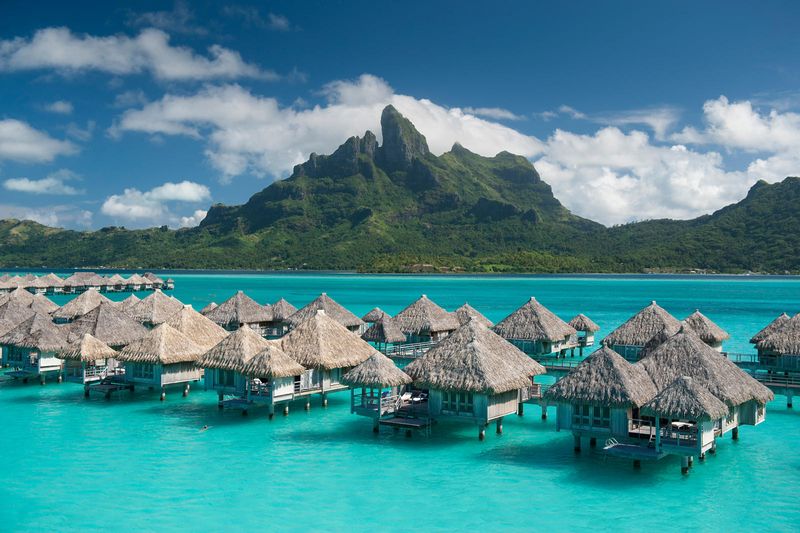
Those iconic overwater bungalows perched above turquoise lagoons make Bora Bora instantly recognizable. From the air, it’s exactly as advertised – a perfect ring of white sand surrounding a dramatic green mountain. Yet many visitors discover a disappointing reality behind the perfect photos.
The island’s popularity has led to overcrowded beaches, manufactured experiences, and coral reefs damaged by decades of tourism. I found most activities overpriced and underwhelming compared to less famous Pacific islands. While you’ll certainly get Instagram-worthy shots, the authentic Polynesian experience is increasingly hard to find amid the luxury resorts.
10. Santorini, Greece – Beautiful from Afar, Chaotic Up Close
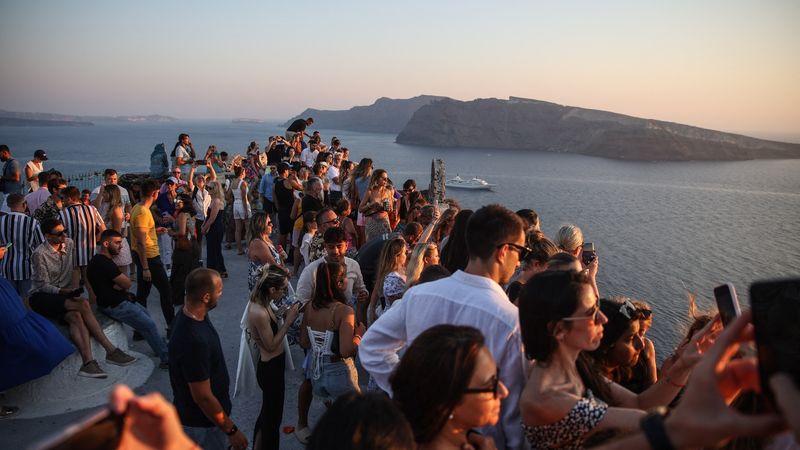
Those postcard-perfect white buildings with blue domes against the Aegean Sea make Santorini a photographer’s dream. What those carefully framed images don’t show are the crushing crowds that pack the narrow streets during peak season.
I’ve watched sunset in Oia alongside hundreds of jostling tourists, all fighting for the same photo spot. The beaches, with their volcanic black sand, look striking in photos but prove uncomfortable for actual sunbathing. Cruise ships disgorge thousands of day-trippers, transforming charming villages into congested tourist traps where authenticity is increasingly rare.
11. Maya Bay, Thailand – Victim of Its Own Beauty
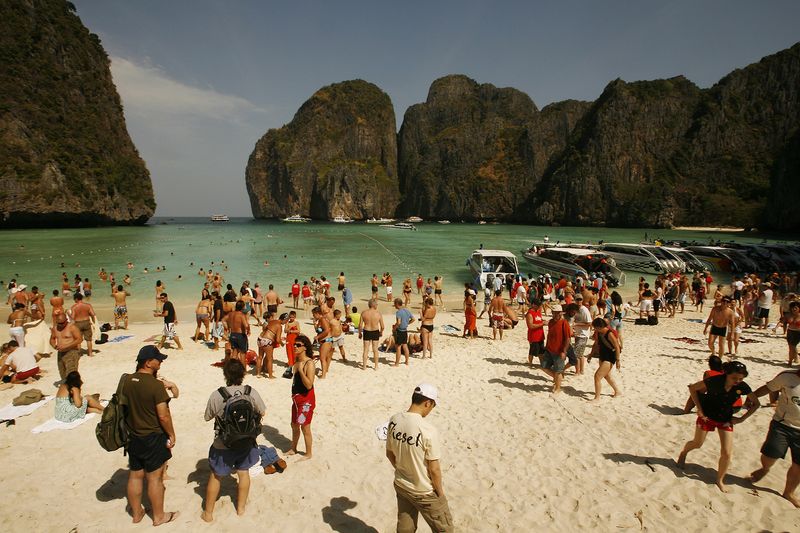
Made famous by Leonardo DiCaprio’s film ‘The Beach,’ Maya Bay on Phi Phi Leh island became a victim of its own publicity. The perfect horseshoe cove with crystal water and limestone cliffs looks straight out of paradise in photos.
Reality told a different story – before authorities closed it for rehabilitation, over 5,000 visitors crammed onto the small beach daily. I witnessed boats lined up horizon to horizon, destroying coral and polluting waters. Though recently reopened with strict visitor limits, the damage to the underwater ecosystem remains extensive. It’s a sobering example of how Instagram fame can literally love a place to death.
12. Venice, Italy (Islands) – Sinking Under Tourism’s Weight
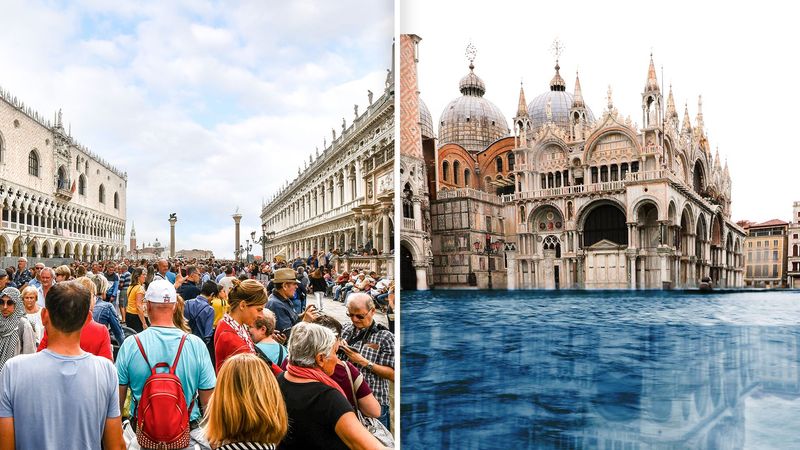
Though not tropical, Venice comprises 118 small islands connected by canals and bridges – a floating city that seems magical in photos. The reality feels increasingly like a sinking theme park rather than a living community.
During my last visit, I could barely move through St. Mark’s Square amid selfie sticks and tour groups. Authentic Venetian culture struggles to survive as locals abandon the islands, unable to afford living in what’s becoming a museum city. The canals, while photogenic, often suffer from pollution and overwhelming boat traffic that damages historic foundations.
13. Boracay, Philippines – Paradise Corrupted and Partially Redeemed
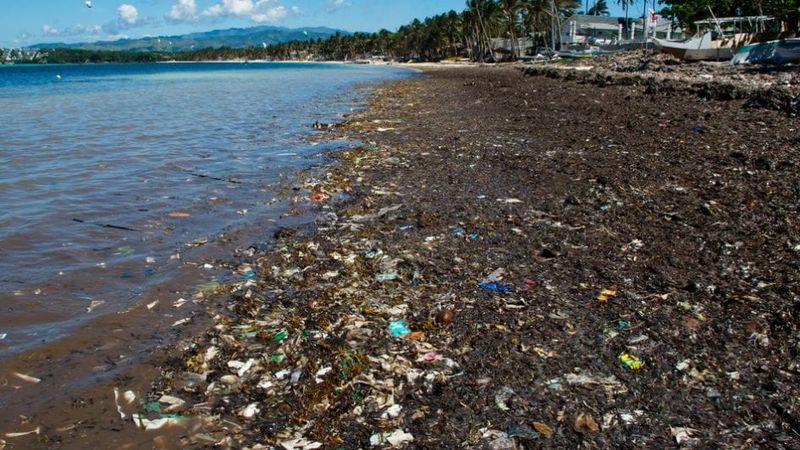
Boracay’s White Beach consistently ranks among the world’s most beautiful, with powder-fine sand and gentle turquoise waters that photograph perfectly. By 2018, however, the small island had become what Philippines President Duterte famously called a ‘cesspool’ due to overtourism and poor infrastructure.
The government took the unprecedented step of closing the entire island for six months for rehabilitation. While conditions have improved since reopening, I found the atmosphere still heavily commercialized. Behind the perfect beach photos lie crowded resorts, persistent water quality issues, and an island struggling to balance tourism dollars with environmental sustainability.
